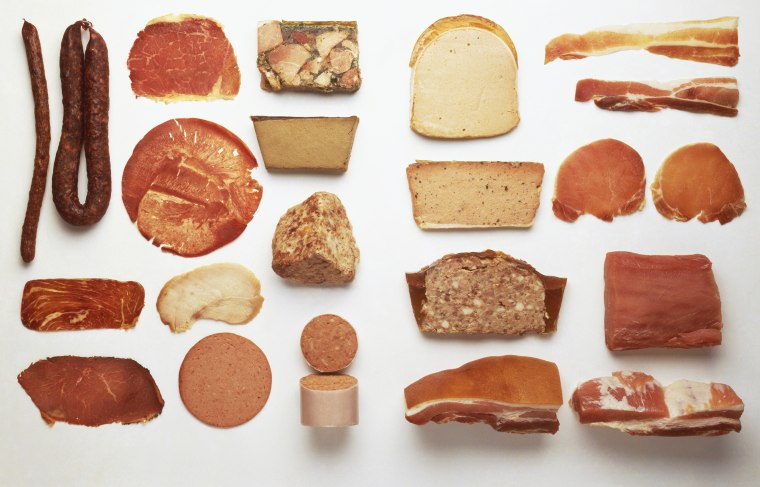Ham, luncheon meat, sausage and bacon have been linked to cancer, obesity and heart disease, but Americans still can’t kick their processed meat habit.
Although American adults are eating less red meat than they did 18 years ago, processed meat consumption has remained the same — accounting for one quarter of all red meat and poultry eaten in the United States every year, according to a study published Friday in the Journal of the Academy of Nutrition and Dietetics.
Researchers at Tufts University evaluated nearly two decades of National Center of Health Statistics diet recall data collected from nearly 44,000 adults, ages 20 and older, in two-year cycles. The dates were 1999-2000 and 2015-16.
The top five processed meats consumed by American adults weekly, in order:
- Luncheon meat
- Sausage
- Hot dogs
- Ham
- Bacon
And despite study after study showing the health benefits of eating two servings of fish a week, especially seafood high in omega-3 fatty acids, Americans aren’t consuming any more fish and shellfish than they did in 1999.
“Americans consume more processed meat than fish for each year,” said study author Fang Fang Zhang, a nutrition and cancer epidemiologist at Tufts University’s Friedman School of Nutrition Science and Policy.
Concerns about mercury content in fish and the protein’s high cost could both be contributing factors keeping seafood from gaining popularity in the American diet. Education could be another.
Processed meat is cheap, convenient, it’s everywhere and everybody loves the way this stuff tastes.
“There’s still a lack of awareness around the benefits of consuming fish and the negative impacts of consuming processed meat,” Zhang said. “People may look at protein as protein, but we’re realizing increasingly that the source of protein matters.”
Yet even for bacon-lovers who know it’s bad, its appeal is strong.
“Processed meat is cheap, convenient, it’s everywhere and everybody loves the way this stuff tastes,” said Marion Nestle, a professor emerita of nutrition, food studies, and public health at New York University. Nestle was surprised to see that the data showed no significant correlation between people of certain income levels or race eating more processed meats.
While the U.S. guidelines include processed meat as part of a balanced diet, as long as they do not exceed the recommended daily sodium or fat intake, the World Health Organization classifies the food as carcinogenic and advises against eating it. The American Cancer Society Guidelines on Nutrition and Physical Activity for Cancer Prevention recommend choosing fish, poultry or beans instead of red or processed meat.
According to Colleen Doyle of the American Cancer Society, it's unknown whether there is a safe amount of processed meat or if certain processed meats are less unhealthy than others. Studies that have linked processed meat consumption to certain types of cancers have not yet differentiated between red processed meat — such as ham — or white processed meat, like turkey.
Warning labels?
Widespread education campaigns that mirror those that curbed tobacco use and red meat consumption could be the first step, the research suggests, but both Nestle and Zhang agree that it will take more than education.
“Education is usually never enough. We need to put warning labels on products or adjust prices,” said Nestle. “If you want to discourage people from eating these things, you need to make it harder to eat them.”
According to Zhang, processed meat’s relatively low cost has remained unchanged since the ’90s.
Consumers may be unclear about what counts as processed meat. According to the U.S. dietary guidelines, processed meats include poultry that is preserved by smoking, curing, salting or chemical preservatives, and sausages, bacon, beef jerky and luncheon meat, which accounts for nearly 40 percent of all processed meat consumed nationally.
Australia, Chile, Israel and the U.K. have all passed food label requirements in recent years that warn consumers when a product contains certain chemicals deemed potentially harmful or are high in ingredients such as sugar and fat.
“A lot of countries are getting out ahead of us with labeling their products that aren't good for us — whether something that should be consumed all the time or infrequently,” said Emily Broad Leib, director of the Harvard Law School Food Law and Policy Clinic. “That's where we should be heading, and this should be a part of it.”

